Banksy made us think twice about Graffiti and where the dividing line lay between serious art and street art. It's something that's thriving in the East End of London, around the Brick Lane area. Go any day and see sensational wall paintings, colourful, realistic, comic-style and fantastical. Many of the artists whose work is displayed have since gained commissions from this exposure which is a very positive outcome, but these works are ephemeral, here today and gone tomorrow, otherwise known as utilising the wall and painting over them. It pays to go every day if possible.

The Alternative Picture Gallery
by Maritravel
Not all art is hanging on walls in the major galleries of the capital. Wander around London's East End, look for the graffitied walls, and be amazed at the art on display.
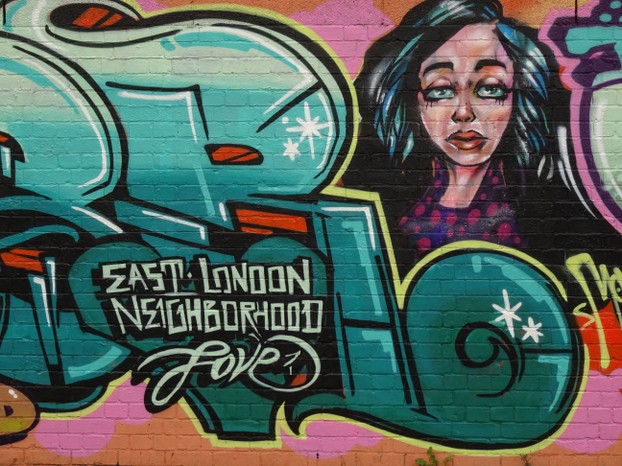 Welcome to East London Steve Moore |
A meeting with London photographer Steve Moore introduced me to some wonderful graffiti in the Brick Lane area of London. Steve has been photographing these walls for many months and has a great collection of photographs of these walls on which the graffiti changes almost daily. He has kindly allowed me to use some of his photography. I wish I could show you more but I can urge visitors to the capital to make their way there and see for themselves.
These are very contrasting images, deliberately placed by me side by side, because this represents the place from which they come, an eclectic collection of images of quiet, contemplative portraits and violent, manga-style fantasy.
Out of the many photographs of graffiti in this area that Steve has taken over the past few months, it is difficult to choose those that exemplify the artistic urge behind the artists' work. Here are just a few more to whet the appetite.
Comic Book Illustrations
Not all are social comment or pictorial representations, a lot of the graffiti on view on these walls are Manga-style pictures, testifying perhaps to the interest in the illustrated comic-books and graphic novels of today.
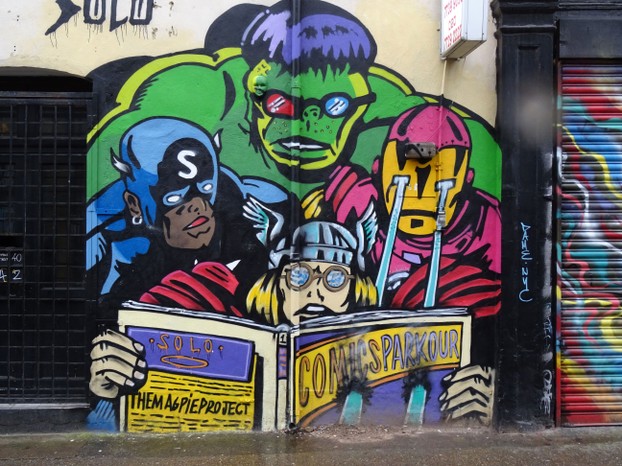 Comic Book style Photo - Steve Moore |
It may not be wise to leave your van alone when you visit. If it is standing still long enough, someone will paint something on it!
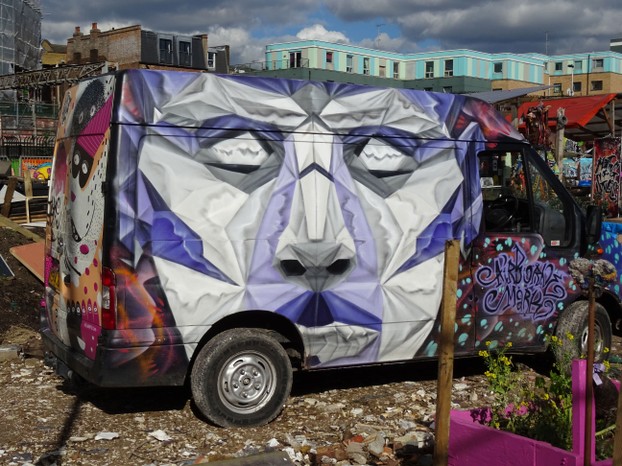 The Graffities Van Photo - Steve Moore |
Exceptional Graffiti
And then there are others, weird, abstract pictures that leave people wondering, sometimes moved by the experience. The preponderance of such art in this area does make one question what is being presented to us in the major galleries as the height of man's artistic prowess. I'm not saying that the great pictures housed in our national and private galleries are inferior, far from it, but I do query the experts who price so called 'modern' art in stratospheric figures when down here, in the East End of London, dozens of young men and women, many of them art school graduates looking for a client, are connecting with a different public. I've seen this public, standing silently before these images, the sort of people who would never dream of crossing the steps of the National Gallery or the Tate Gallery, the sort of people who think those places "aren't for me".
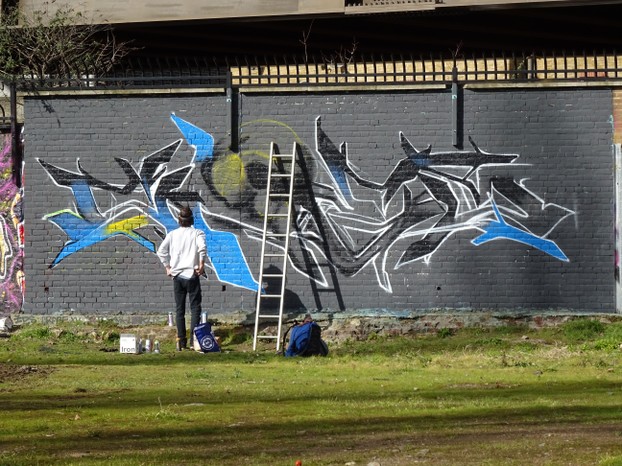 An Artist at Work Photo - Steve Moore |
A Few of my Favourites
No. 1 favourite is the one below of the Battle of Cable Street, a dark moment in England's social history when the home-grown fascists of the Mosley Brigade fought with the local people. The battle took place on Sunday 4th October 1936 in Cable Street, a bloody clash between the police who were protecting the members of a march by members of the BUF, the British Union of Fascists led by Oswald Mosley. The defenders of the patch were local Jewish, socialist, anarchist and communist groups. Mosley's followers were dressed in uniforms styled on those of Hitler's Blackshirts and the East End at that time had a large Jewish population.
The Battle of Cable Street was a major factor in the passing the Public Order Act which required police consent for political marches and forbade the wearing of political uniforms in public, an Act widely considered to be a significant factor in the BUF's political decline prior to the Second World War.
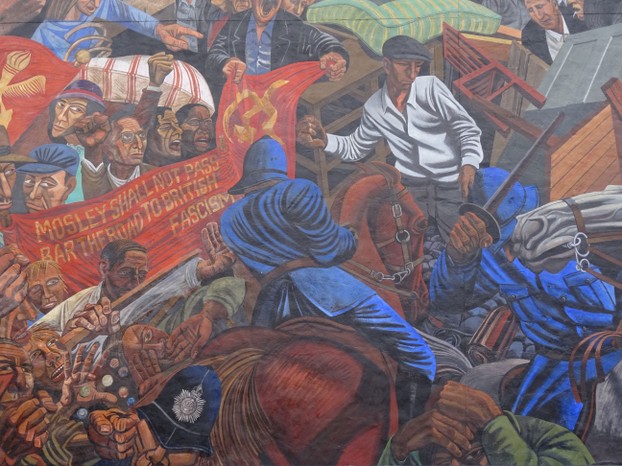 The Battle dor Cable Street (a small portion of the whole) Photo - Steve Moore |
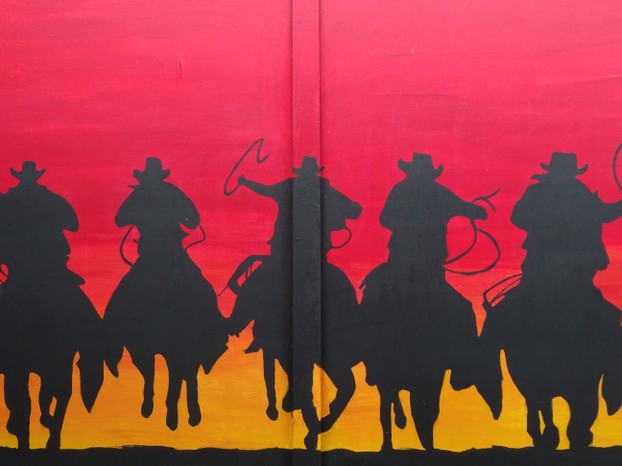 Like a good film shot - it connects instantly Photo - Steve Moore |
You might also like
The Many Tones and Undertones of Color PinkPink color is especially popular among girls but this is true for less than h...
A Colorful Journey: Comparing and Contrasting Mexican Folk Art...Beyond the confines of museums and galleries lies a vibrant world that often ...
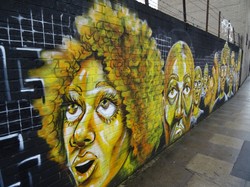

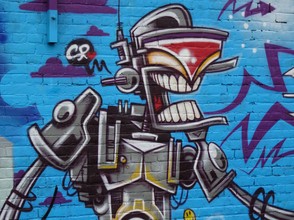
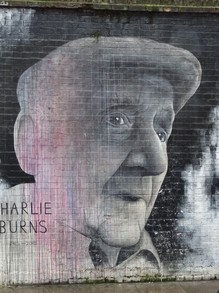
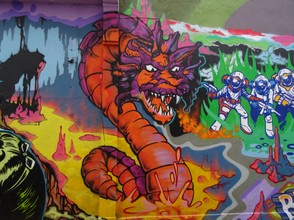
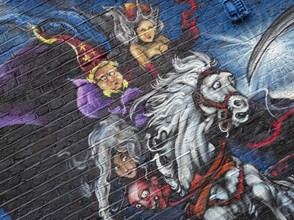
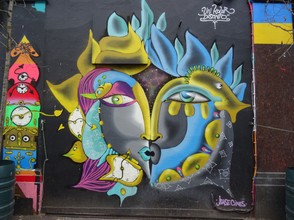
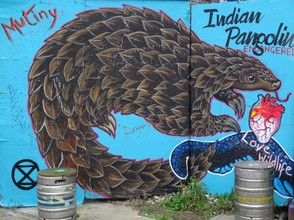
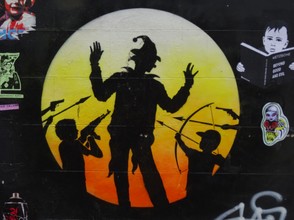
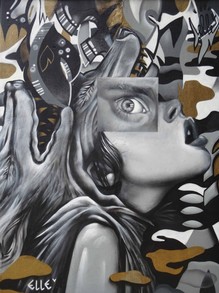
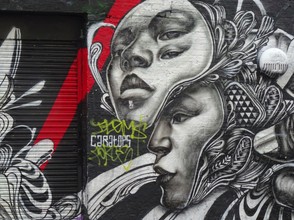
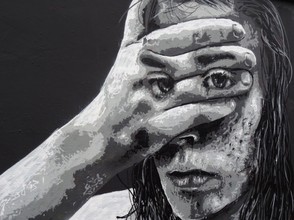
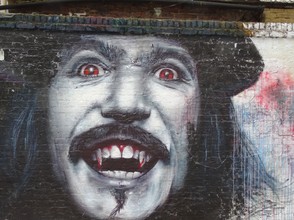

 ROME - Where the Past Comes to Lifeon 03/26/2016
ROME - Where the Past Comes to Lifeon 03/26/2016
 Only in London - New Unique Guideon 01/25/2016
Only in London - New Unique Guideon 01/25/2016
 Manna, from Sicily, not from Heavenon 01/08/2016
Manna, from Sicily, not from Heavenon 01/08/2016
 A Weekend in a Castle - the White Cliffs Experienceon 12/16/2015
A Weekend in a Castle - the White Cliffs Experienceon 12/16/2015

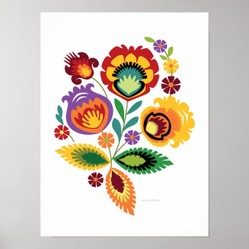
Comments
Thank you, Angela and Jan, for those comments. In reply to Angela, yes, they have permission to paint on these walls. It is a spare bit of ground which will be developed eventually for housing or offices (most probably the latter given its position), but until then the artists are allowed to embellish it as they will. Meantime, it has given work not just to them but to a pop-up snack-bar, a pop-up shoe shop and a few musicians who gather there.
Graffiti means painting or tagging property without permission. But hopefully, these graffiti artists had permission to paint on these walls. They surely are amazing. Here in the U.S. I often see scenes painted on an outside store wall (usually made of brick). It seems out of place at first, but then it draws you in. These scenes aren't as modern as the ones you show. And once in a while, I've seen a scene painted on a wooden fence. Art can be anywhere!
I think that Wow is the appropriate word here. What a wonderful, vibrant display of artistic creativity. I fear that should something appear in my locality, it would be met with shock, horror and a man with a bucket and brush.